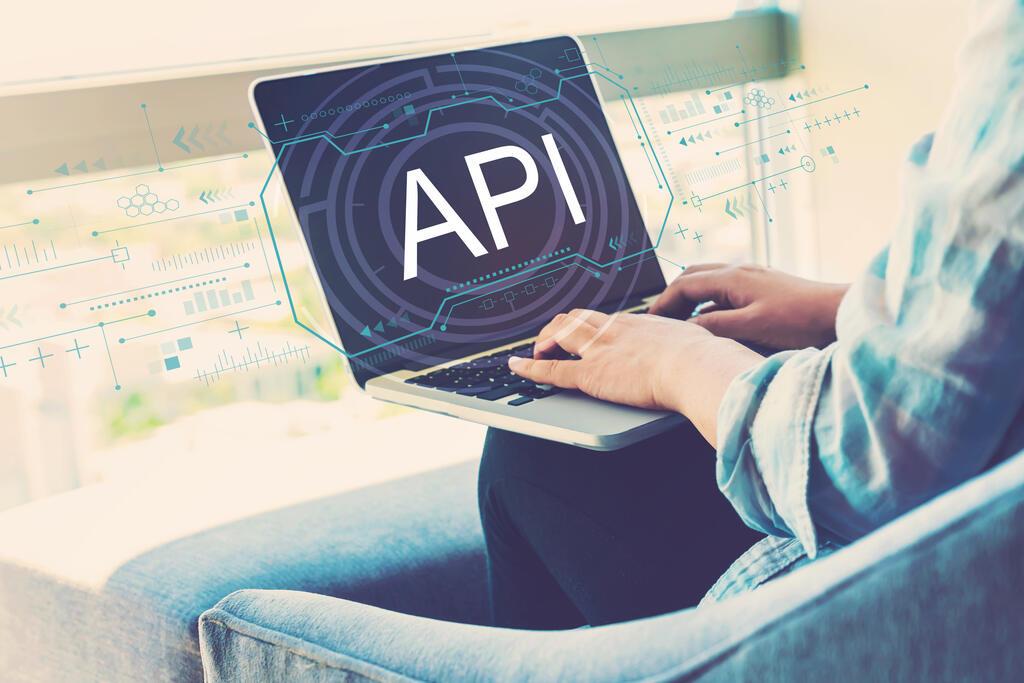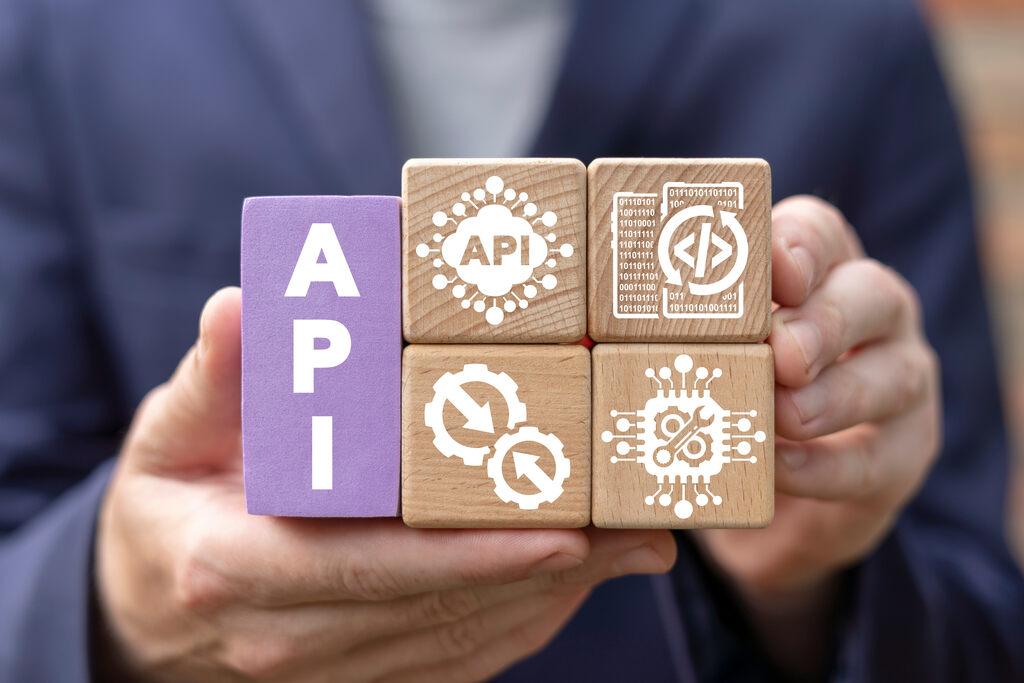If you're running an ecommerce business, API integration is an integral part of your tech strategy. Imagine your ecommerce operation as a busy airport where orders, inventory updates, and customer actions are planes taking off and landing. APIs are the air traffic controllers—coordinating the timing, routing, and safety of every interaction so nothing crashes, overlaps, or gets delayed.
Let’s take a look at what API integration means for ecommerce, why it’s indispensable for success, and how you can nail API best practices to keep your digital storefront agile and secure.
What is API integration in ecommerce?

API integration is one way to connect different software systems so they can communicate seamlessly.
In this instance, the process links your ecommerce platform to other critical systems—such as payment gateways, shipping providers, customer relationship management (CRM) systems, and even social media channels. Instead of your store operating in isolation, API integration allows it to pull in data, push updates, and offer a connected experience for your customers. It’s the behind-the-scenes magic that turns complex, disparate systems into a unified ecosystem, ensuring that customers experience fast checkouts, get accurate product information, and have a great overall experience, every time they visit your site.
An example to illustrate
Imagine an ecommerce brand called "Global Gear" that sells outdoor equipment across several marketplaces—from its own website to platforms like Amazon, eBay, and Walmart. Global Gear needs to manage inventory, pricing, and orders seamlessly across these channels. This is where API integration comes into play.
Using APIs, Global Gear can automatically update stock levels in real time and process orders from multiple marketplaces without manual intervention. This means that when a customer buys a tent on Amazon, the inventory on Walmart.com and the Global Gear website adjusts instantly, preventing overselling. With robust API connections, Global Gear can streamline its operations and focus on what really matters: delivering top-quality outdoor gear to adventurers around the world.
Why API integration is essential for ecommerce success

Success in today’s crowded ecommerce marketplace relies on speed, reliability, and personalization. Without the integration of essential systems and channels each part of your business is operating in isolation, whih can leave you, struggling to keep up with customer expectations and market trends.
Seamless customer experiences
Customers demand quick and personalized experiences. API integration allows you to connect the dots between the tools that house this data, linking your website to everything from payment systems to inventory management.
When a customer clicks "Buy Now," everything from the stock count to the final payment price— with their loyalty discount—is updated instantly. The result? No frustrating delays or mismatched information that could drive potential buyers away.
Operational efficiency
Running an ecommerce store involves juggling countless processes at once. With the power of API integration, you can automate routine tasks and reduce manual errors. This means less time spent on updating processing orders or reconciling payment data.
Instead, your team can focus on strategic initiatives like marketing and customer engagement. When systems work together, you save time, money, and energy—resources that are crucial for growing your business.
Scalability and agility
Market trends change and peak shopping seasons can bring sudden surges in traffic. With API integration, your systems can scale up to meet demand without breaking a sweat.
Whether it’s adding new sales channels, integrating a fresh payment solution, or updating your CRM, APIs provide the flexibility to adapt quickly. This agility is key to staying competitive in an ever-evolving ecommerce landscape.
Data-driven decisions
One of API integration's greatest strengths is its ability to provide real-time data. When all your systems talk to each other, you get a holistic view of your business, from ecommerce sales trends to customer preferences.
This rich data stream empowers you to make decisions that drive growth. Whether it’s tweaking your marketing strategy or optimizing inventory levels, real-time insights allow you to act fast and stay ahead of the competition.
Case studies: How businesses are leveraging API integration with VTEX
Let’s see how APIs are transforming real businesses with real struggles.
Cartamundi goes headless with VTEX
Cartamundi, a global leader in manufacturing playing cards and board games, recently embraced a headless commerce architecture using VTEX to modernize its digital storefront.
With the decoupling of the front-end presentation from the back-end commerce engine, Cartamundi now has the flexibility to innovate and tailor its user interface without interfering with core operations.
A critical part of this transformation involved leveraging VTEX’s robust API capabilities, which enabled Cartamundi to integrate various services seamlessly. This API-driven approach ensured that Cartamundi could add updates and new functionalities quickly, maintaining high site performance and responsiveness while meeting customer demands.
Overall, the headless architecture combined with efficient API integrations has enabled Cartamundi to deliver a more dynamic and engaging online shopping experience to its global audience.They launched a new website in only five months and increased conversion by 9% since going live.
Macromex revolutionizes B2B ecommerce with VTEX native capabilities
Macromex, a frozen food producer and distributor that relies heavily on its B2B ecommerce practice, transformed its digital commerce platform by harnessing VTEX’s native capabilities. Focused on optimizing the ordering process for its business clientele, Macromex integrated key functionalities such as advanced search, dynamic pricing, and personalized product catalogs directly through VTEX’s platform.
This transformation was further enhanced by leveraging VTEX’s powerful API integrations, which allowed Macromex to connect and streamline various systems effortlessly. Macromex not only improved its overall user experience by making product discovery and ordering more intuitive, but it also enhanced internal efficiency and scalability. It reduced costs and upgraded its customer base.
This comprehensive approach positions Macromex strongly in a competitive industry, showcasing how native ecommerce solutions combined with flexible API integrations can drive significant growth and operational excellence in the B2B sector.
Best practices for API integration in ecommerce

Here are some best practices that will help you maximize API efficiency and safeguard your operations:
Choose reliable API providers
Partnering with reliable API providers is the backbone of successful API integration. Not all APIs are created equal, so it’s important to do your homework. Look for providers with a proven track record of uptime, robust support systems, and comprehensive documentation.
For instance, VTEX is known for offering a resilient and scalable platform that many leading ecommerce brands—like Nestle, Carrefour, Coca-Cola, Walmart—trust. When you choose a dependable provider, you’re laying a strong foundation for your digital ecosystem.
Focus on data security and privacy
In an age where data breaches can make headlines, protecting your customers' information is non-negotiable. When integrating APIs, it's critical to implement strong security measures. This means encrypting data, using secure protocols, and ensuring that only authorized systems can access sensitive information.
A secure API integration strategy acts as a shield, and your ecommerce platform remains safe and reliable, even as you scale.
VTEX Shield empowers your security and IT teams with custom protection tools to monitor, protect, and mitigate security, compliance, and privacy risks. It actively monitors threats, alerts you to common fraudulent activities in real time, safeguards your features and APIs, and supports compliance with legal standards.
VTEX Shield also keeps you informed about data leaks, inactive admin users, and red flags like SQL injection and cross-site scripting. Plus, you can analyze and classify threats based on the risk they pose to your business and data privacy.
Ensure flexibility for future growth
Your technology stack should be flexible enough to grow with your business. Opt for APIs that offer modularity and ease of integration, allowing you to add or replace components without overhauling your entire system. This future-proof approach is crucial, as it enables you to quickly adapt to new technologies and market demands.
Regularly update and test APIs
API integration isn’t a set-it-and-forget-it deal. It’s vital to regularly update and test your APIs. Scheduled maintenance and testing help you catch potential issues before they affect your customers. Think of this as giving your systems a regular health check-up—guaranteeing they run smoothly and efficiently.
Frequent updates also mean you can take advantage of new features and performance improvements, keeping your ecommerce platform on the cutting edge. Besides, regular testing and updates create a robust environment where every integration functions optimally, providing a seamless experience for both your team and your customers.
APIs are the keys to unlocking your digital potential
API integration is the glue that binds ecommerce systems into a harmonious and efficient whole. It enhances operational efficiency, scales seamlessly with demand, and delivers personalized, real-time customer experiences.
By choosing reliable API providers, focusing on data security, ensuring flexibility for growth, and keeping your integrations up to date, you set the stage for a thriving digital ecosystem.
With real-world examples from VTEX-powered companies showing tangible results, it’s clear that a well-executed API strategy isn’t just a technical upgrade—it’s a fundamental driver of success in the digital marketplace. Embrace the power of API integration and watch your ecommerce business flourish.
VTEX solutions harness the power of seamless API integration to connect every aspect of your ecommerce ecosystem. VTEX unifies your storefront, payment systems, inventory management, and shipping, creating a platform that simplifies operations and delivers a superior customer experience.
With real-time data exchange and flexible, scalable integrations, VTEX enables businesses to respond quickly to market changes and customer needs.
Ready to transform your ecommerce journey? Learn more about our Composable Platform today and discover how VTEX can elevate your business.
